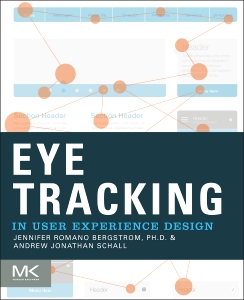Design: Survey Design
UXmatters has published 3 articles on the topic Survey Design.
Top 3 Trending Articles on Survey Design
-
Eye Tracking in User Experience Design
September 22, 20141 CommentThis is a sample chapter from Jennifer Romano Bergstrom and Andrew Schall’s new book, Eye Tracking in User Experience Design. 2014 Morgan Kaufmann.
Chapter 5: Forms and Surveys

Introduction
Most parts of a Web experience are optional. Forms usually are not.
You want to use a Web service? Register for it—using a form. You want to buy something on the Internet? Select it, then go through the checkout—using a form. Want to insure a car, book a flight, apply for a loan? You will find a form standing as a barrier between you and your goal. Read More
-
How to Ask About User Satisfaction in a Survey
November 2, 2012Recently, Janet Six devoted the October edition of her Ask UXmatters column to customer feedback surveys. That column has inspired me to have a go at one particular aspect of customer feedback in more detail: asking about user satisfaction. That and the excerpt from an email message, shown in Figure 1, which I received after an encounter with a customer support facility, complete with its odd repetition of the question. Read More
-
Design Questions for Complex Forms: A Study of Census Envelopes
May 10, 2011Census years are exciting times for the forms enthusiast. They’re quite rare—most countries run their census at 10-year intervals. And they affect the entire population. That’s the definition of a census—a count of an entire population.
Census forms also present lots of lovely forms challenges. A census might be the ultimately complex form: it’s got lots of stakeholders, it takes years to plan, it has to work for absolutely everyone, and it usually includes a lot of relatively invasive questions. The US 2000 Census form was one of the shorter ones, at only four printed pages.
Relax! You’re not in for a dissertation about the history, theory, realities, and everything else about a census. Instead, I’m going to concentrate on one rather small aspect of a census: the envelopes. Why? Because they’ll inspire some general questions that are worth thinking about when you’re designing any complex form. Read More
Columns on Survey Design
-
Good Questions
Asking and answering users' questions
A column by Caroline Jarrett